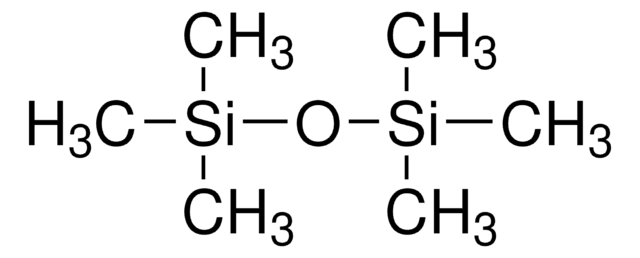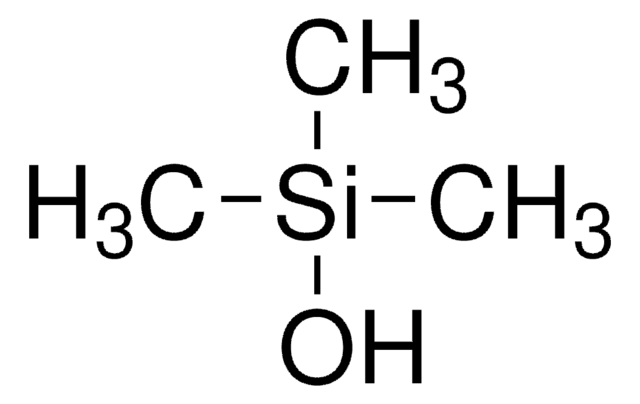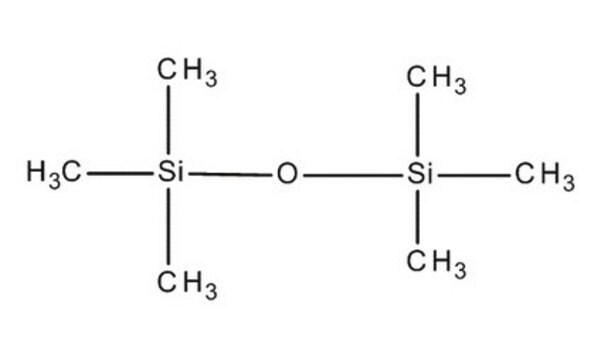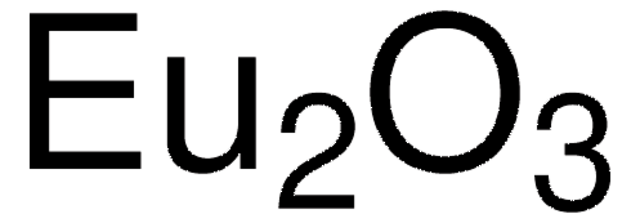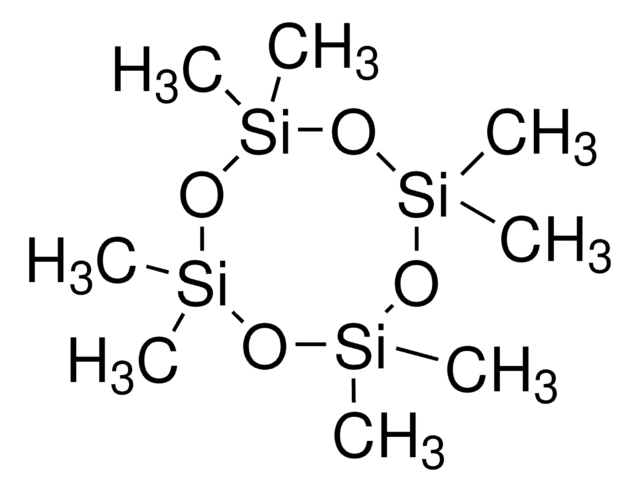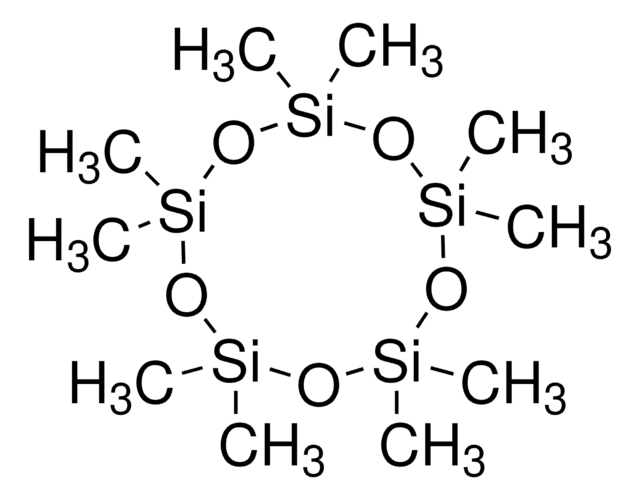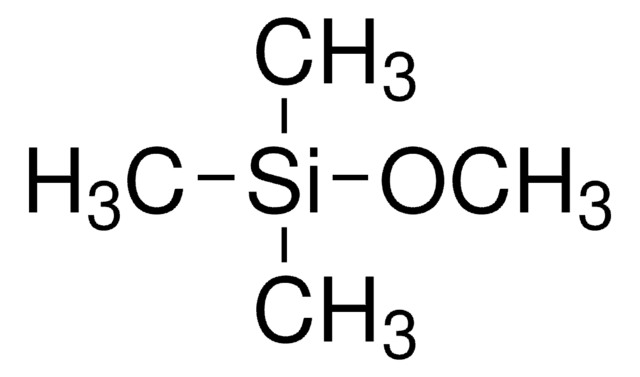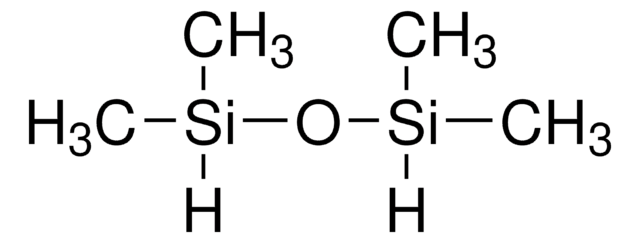205389
Hexamethyldisiloxane
≥98%
Sinónimos:
HMDSO
About This Item
Productos recomendados
densidad de vapor
>1 (vs air)
Nivel de calidad
Ensayo
≥98%
Formulario
liquid
índice de refracción
n20/D 1.377 (lit.)
bp
101 °C (lit.)
101 °C
mp
−59 °C (lit.)
densidad
0.764 g/mL at 20 °C (lit.)
cadena SMILES
C[Si](C)(C)O[Si](C)(C)C
InChI
1S/C6H18OSi2/c1-8(2,3)7-9(4,5)6/h1-6H3
Clave InChI
UQEAIHBTYFGYIE-UHFFFAOYSA-N
¿Está buscando productos similares? Visita Guía de comparación de productos
Categorías relacionadas
Descripción general
Aplicación
- To fabricate a gas diffusion layer (GDL) with controlled hydrophobic silicone nano-layer by the dry deposition process.
- To prepare silver nanoparticles coated with silica using arginine and glucose as the catalyst and the reducing agent, respectively.
Palabra de señalización
Danger
Frases de peligro
Consejos de prudencia
Clasificaciones de peligro
Aquatic Acute 1 - Aquatic Chronic 1 - Flam. Liq. 2
Código de clase de almacenamiento
3 - Flammable liquids
Clase de riesgo para el agua (WGK)
WGK 2
Punto de inflamabilidad (°F)
21.2 °F - closed cup
Punto de inflamabilidad (°C)
-6 °C - closed cup
Equipo de protección personal
Eyeshields, Faceshields, Gloves, type ABEK (EN14387) respirator filter
Elija entre una de las versiones más recientes:
¿Ya tiene este producto?
Encuentre la documentación para los productos que ha comprado recientemente en la Biblioteca de documentos.
Los clientes también vieron
Global Trade Item Number
| Número de referencia del producto (SKU) | GTIN |
|---|---|
| 205389-100ML | 4061838767684 |
| 205389-500ML | 4061838767691 |
| 205389-5ML | 4061838767707 |
Nuestro equipo de científicos tiene experiencia en todas las áreas de investigación: Ciencias de la vida, Ciencia de los materiales, Síntesis química, Cromatografía, Analítica y muchas otras.
Póngase en contacto con el Servicio técnico